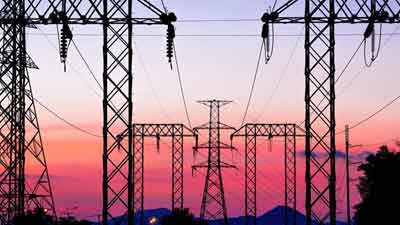Send this article to a friend:
July
31
2021

Send this article to a friend: July |
 |
How residential energy storage could help support the power grid  Household batteries could contribute to making the grid more cost effective, reliable, resilient, and safe—if retail battery providers, utilities, and regulators can resolve delicate commercial, operational, and policy issues. Household batteries could contribute to making the grid more cost effective, reliable, resilient, and safe—if retail battery providers, utilities, and regulators can resolve delicate commercial, operational, and policy issues.The growth of battery storage in the power sector has attracted a great deal of attention in the industry and media. Much of that attention focuses on utility-scale batteries and on batteries for commercial and industrial customers. While these larger batteries are critical segments of the energy-storage market, the rapid growth of residential energy storage is outpacing expectations, and these household systems will likely become important assets sooner than many expect. The growth trajectory and potential value of these household systems to customers and the power grid warrants a closer look.
During the past four years, annual installations of residential energy-storage systems in the United States have jumped from 2.25 megawatt-hours (MWh) in 2014 to 185 MWh in 2018. Many consumers clearly want the added control, reliability, and resilience that comes from having a battery at home. As a result, many communities may soon have an unexpected resource, a network of home-based batteries that residential customers have already paid for but are not used every day. What would it take to enable residential energy storage to help local utilities make power grids more cost effective, reliable, resilient, and safe? Grids in many regions are under increasing strain. Grid assets are aging. Intermittent sources of renewable energy generate increasing amounts of power, requiring more load balancing. The incidence of severe weather is rising. These trends are worsening bottlenecks and choke points in the energy delivery system, resulting in higher costs and threatening to increase local power outages.
We strive to provide individuals with disabilities equal access to our website. If you would like information about this content we will be happy to work with you. Please email us at: [email protected]
The rising incidence of severe weather, along with other trends, has put added strain on grids in many regions, resulting in higher costs and threatening to increase local power outages.
Utilities are taking action to increase grid reliability and resilience. Some utilities already administer so-called demand-response programs that encourage customers to reduce power consumption during peak demand periods. Likewise, utilities are pursuing comprehensive grid-modernization programs to increase capacity and harden the grid system. And some utilities are investing heavily in utility-scale energy-storage solutions, putting big batteries next to power plants and transmission lines and in substations to reduce costs and improve reliability. As more customers invest in “behind the meter” residential energy-storage systems, utilities will gain another potential lever for balancing energy demand and supply. Residential batteries could be linked together and dispatched to deliver grid support services, much as utilities use demand-response programs and ancillary services resources today. Since the batteries are already in place, the marginal cost of dispatching residential energy storage resources could be quite low. This could help utilities avoid more costly remedies such as firing up inefficient peaking plants or building extra grid infrastructure that may only be used infrequently.
Integrating residential-storage systems into an efficient, dispatchable network that supports the power grid won’t be easy. But evidence is emerging that it can be done. Some states have launched pilot programs that let utilities pay battery-equipped households for using some of their stored power at times when the system is under strain. To support market development, regulators and utilities will need to assess how and where residential batteries can support the grid (for example, by identifying capacity constraints at the feeder level) and incorporate their assessments into utilities’ resource- and grid-planning approaches. Regulators may also consider fine-tuning rate structures and other compensation mechanisms for batteries and think through how to integrate batteries into system design. Likewise, residential energy-storage network operators will need to make sure customers have bought in to using their batteries to support the grid and demonstrate to the local utility that these behind-the-meter systems are reliable and dispatchable at a moment’s notice when the utility grid network needs the support.
|
Send this article to a friend:
 |
 |
 |